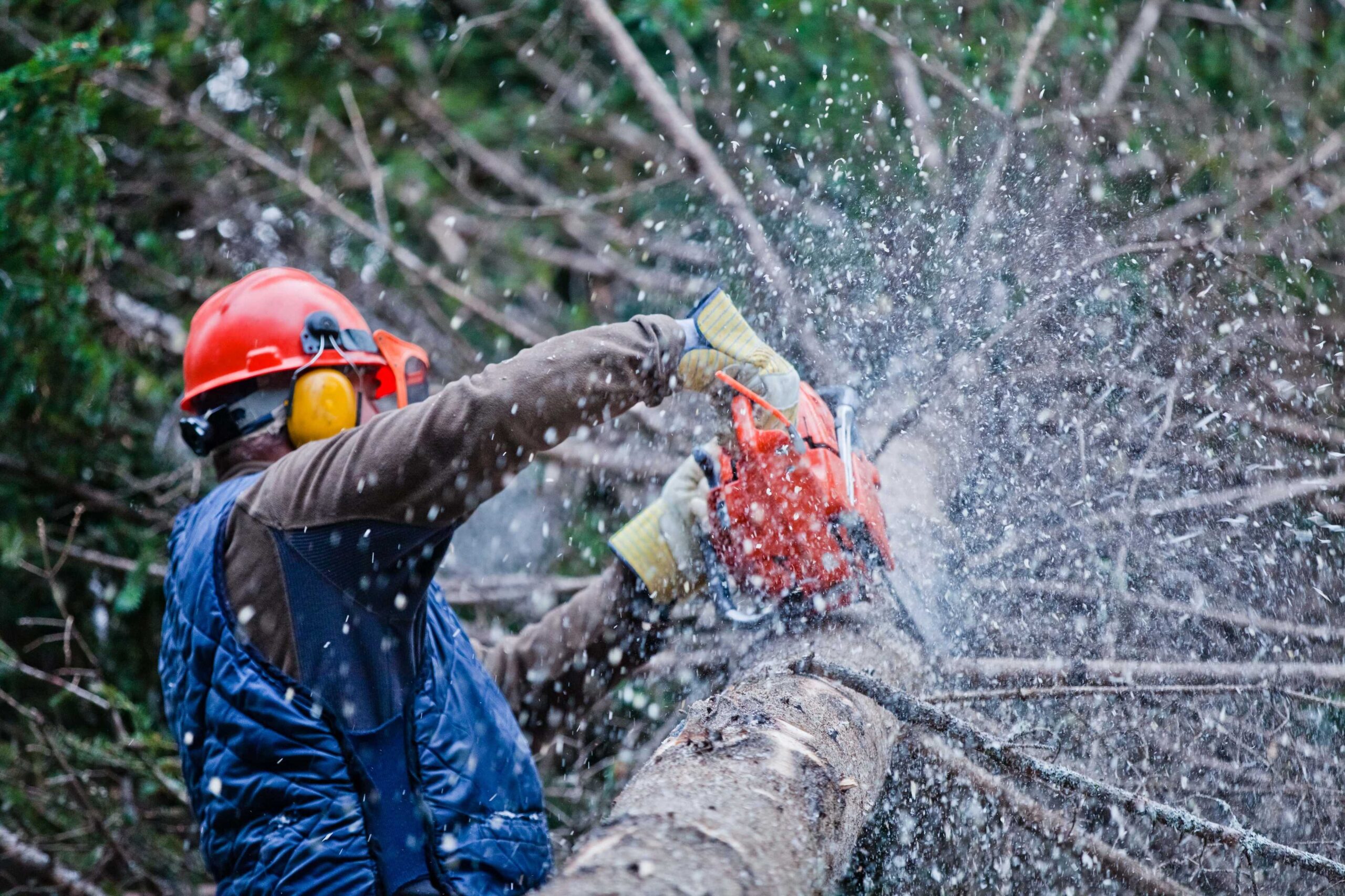
Chainsaw Safety
Course Overview
The impressive cutting power of a chainsaw when felling a tree underscores the importance of chainsaw operators maintaining a profound respect for their equipment. Understanding the limitations and potential dangers associated with your chainsaw is crucial for effectively managing risks and ensuring the safety of yourself and those around you.
This online chainsaw safety training employs live-action demonstrations, animated diagrams, and interactive activities to equip you with the essential knowledge for the safe and effective operation of your chainsaw. Whether your tasks involve cutting down trees or working with construction materials such as HDPV pipe, this course comprehensively addresses the necessary preparations, safety protocols, cutting techniques, and post-operation procedures required to carry out your work safely.
Course Topics
- Chainsaw components and safety features
- Types of chainsaws
- Physical and site preparation for chainsaw use
- Safety requirements for chainsaw use, including PPE
- Hazard assessment, identification, and control
- Pre-operational inspections and function checks
- Chainsaw start-up methods
- Cutting techniques and best practices
- Post-operational maintenance and inspection
- Chain filing
Online Assessment
Students answer questions on the course material and are required to obtain a minimum passing mark of 80%. The student will have two additional opportunities to pass if required.
Completion Certificate
Following successful completion of this chainsaw training course, the student will have the opportunity to download and print a certificate of completion which is valid for a period of 3 years.
Bulk Purchases
To order multiple copies of this course for employees, please do give us a call directly at the number on the bottom of the page.
Frequently Asked Questions
-
- A Chainsaw Safety course typically teaches you how to handle a chainsaw properly, focusing on techniques like maintaining a firm grip and avoiding kickback—a sudden upward jolt that can occur if the chain hits an obstruction. You’ll learn to keep the saw under control and minimize risks.
- It dives into maintenance essentials, such as sharpening the chain, checking tension, and ensuring the saw’s safety features, like the chain brake, work correctly. This keeps the tool in top shape and reduces the chance of malfunctions.
- The course emphasizes personal protective equipment (PPE), like helmets, gloves, and cut-resistant chaps, hardhats and covers safe cutting methods and hazard awareness.
-
- Our Chainsaw Safety course lasts roughly 75 minutes or so depending on your pace.
- The time varies based on your experience level and the course depth—beginners might need more time to absorb the material, while seasoned users could breeze through a refresher in under an hour.
- Cost is $79.99.
-
- Yes, even casual users benefit hugely from this training because chainsaws don’t care if you’re a pro or a weekend warrior—they’re dangerous either way. A course teaches you how to avoid common mistakes some of which can cause kickback.
- It’s not legally required for homeowners in most places, but knowing safety basics can prevent accidents—like the classic case of someone slicing into their leg while trimming branches without proper stance or PPE.
- Plus, you’ll gain confidence and efficiency, making tasks like cutting firewood or clearing storm damage less stressful and far safer for you and anyone nearby.
-
- The course highlights kickback as a top culprit—it happens fast when the chain catches, sending the saw back toward you, often because folks don’t know to avoid the tip or use a low-kickback chain.
- Poor maintenance is another biggie; a dull chain or loose parts can make the saw unpredictable.
-
- You can absolutely take a Chainsaw Safety course online, and many are designed to be comprehensive, covering theory like hazard recognition and PPE use through videos and quizzes. It’s super accessible and fits into your schedule.
- That said, hands-on training is often recommended because it lets you practice real cuts and feel the saw’s power—online can’t replicate that.
- For beginners especially, getting that physical experience is key; you’ll learn faster by doing, like figuring out how to balance the saw properly or react to a sudden shift in wood tension.
RELATED COURSES
Effective Use of PPE
Workers depend on their Personal protective equipment (PPE) to protect not only themselves but their...
Lockout Tagout (LOTO)
Lockout and Tagout procedures are the primary means for employees that use and maintain power...
Hazard Assessment Safety
A hazard is any practice, behavior, substance, condition, or combination of these that can cause...









